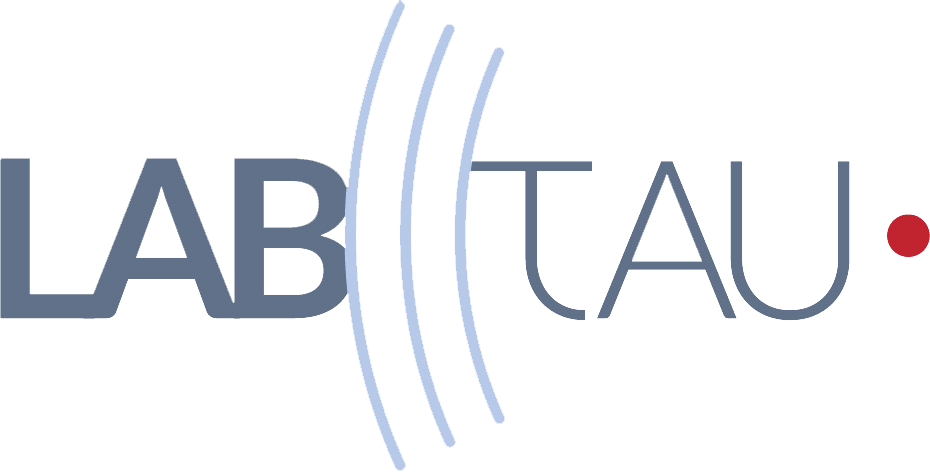Axis 1 : High Energy Ultrasound
 Focused ultrasound is an early-stage, mini-invasive or completely non-invasive therapeutic technology with the potential to treat many medical disorders by using ultrasonic energy to target tissue deep in the body. The fundamental principle is to direct a high-energy focused ultrasound beam harmlessly across intervening tissues towards the target or to place directly the emitting source in contact with the target. Only at the focus of the beam is the energy level great enough to cause a temperature rise sufficient for instantaneous cell death. Depending on the design of the emitting source and the ultrasound parameters, the target can be as small as 1.0x1.5mm2 or as large as 20x25mm2 in diameter. For soft biological tissues the mechanism of action of HIFU is not tissue-specific and so a wide range of soft tissues as well as tumor types can be treated. In addition, in contrast to ionizing radiation, treatment can be given more than once as there is no upper limit of tissue tolerance to repeated ultrasound exposure. There are very few side effects of treatment, and serious adverse events are rare.
Focused ultrasound is an early-stage, mini-invasive or completely non-invasive therapeutic technology with the potential to treat many medical disorders by using ultrasonic energy to target tissue deep in the body. The fundamental principle is to direct a high-energy focused ultrasound beam harmlessly across intervening tissues towards the target or to place directly the emitting source in contact with the target. Only at the focus of the beam is the energy level great enough to cause a temperature rise sufficient for instantaneous cell death. Depending on the design of the emitting source and the ultrasound parameters, the target can be as small as 1.0x1.5mm2 or as large as 20x25mm2 in diameter. For soft biological tissues the mechanism of action of HIFU is not tissue-specific and so a wide range of soft tissues as well as tumor types can be treated. In addition, in contrast to ionizing radiation, treatment can be given more than once as there is no upper limit of tissue tolerance to repeated ultrasound exposure. There are very few side effects of treatment, and serious adverse events are rare.
The research activity of the “High Energy Ultrasound” team covers the entire range of investigation from the bench to the bedside. Designing new clinical prototype devices, developing methods of treating difficult regions and studying the biophysics involved in the treatments complement our theoretical work. Based on medical needs our research work aims to develop new ultrasound treatments. To date the targeted pathologies are prostate tumors, primary and secondary liver tumors, pancreatic tumors, brain tumors and breast tumors. Our research also aims to treat non-oncological applications such as cardiac, obstetrical and neurological diseases. This poses clinical, theoretical and technological challenges. Our group is recognized as one of the international leaders in the field of therapeutic ultrasound research and clinical applications. The use of ultrasonic power for the treatment of pathological tissues, especially in oncology is a highly competitive and particularly promising area as evidenced by the multiplication of teams involved on the international level and new devices using high energy ultrasound put on the market recently.
The work conducted in the “High Energy Ultrasound” team can be divided into two main domains and is conducted in close collaboration with all the other teams of the laboratory:
High energy ultrasound devices for mini-invasive therapy
Interstitial ultrasound applicators have been proposed for treating deep-seated tumors that cannot be reached with extracorporeal high-intensity focused ultrasound. In addition, interstitial ultrasound offers several advantages compared with conventional ablation technology (radiofrequency, microwaves, cryotherapy) in terms of penetration, speed of coagulation, ability to direct and control the thermal lesion and compatibility with image monitoring. The ultrasound source is brought as close as possible to the target in order to minimize the effects of attenuation and phase aberration along the ultrasound pathway. The research conducted using mini-invasive devices will be focused on on-going clinical work as well as completely new treatment strategies for the following pathologies:
• Treatment of prostate cancer
• Treatment of digestive pathologies using augmented reality
• Treatment of atrial fibrillation
• Treatment of liver metastases using a toroidal transducer
• Treatment of pancreatic tumors using a toroidal transducer
High energy ultrasound devices for completely non-invasive therapy
In a completely noninvasive and safe HIFU treatment the energy must pass harmlessly across intervening tissues (skin, fat, muscles) towards the target tumor. Ideally, only at the focus the convergence of the focused beams results in a significant temperature rise leading to irreversible tissue destruction. However, intervening tissues have ultrasonic parameters different from the target. Moreover, the use of a multi-element concave transducer involves an unequal contribution of each element in intervening tissues and in the focal zone. This is mainly due to the difference in the distance between all the elements and a given tissue layer. This can lead to changes in the focus shape as well as skin burns due to an increase energy deposition in intervening tissues. We recently patented a new focusing process which combined with an appropriate modulation of the power applied to each element allows homogenizing the pressure in intervening tissues. This provides a better control of energy deposition to avoid skin burns and maximize the energy at the focus for treating the tumor. In addition the shape of the focal volume is well controlled.
The research conducted using devices for completely non-invasive treatments will be focused on the following applications:
• Treatment of glaucoma
• Treatment of liver tumors
• Treatment of breast tumors
• Treatment of the placental unit




